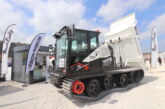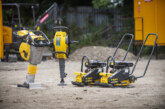
OnSite Support’s top tips on essential PPE workwear for staying dry and warm this winter
As outdoor workers brace themselves for snow and heavy weather conditions in January, employers need to be ensuring that they have personal protective clothing (PPE) that keeps them safe, warm and protected from the elements.
“Snow, wet and cold weather conditions increase workplace accidents and illness at this time of year, so it’s important to minimise these risks by making sure your employees are visible, warm and properly dressed for the outdoor weather conditions,” says OnSite Support safety workwear specialist Chris Wellgreen.
He offers the following advice on essential PPE winter workwear for staying warm and dry during the cold months ahead:
- Keeping warm: The body loses up to 30 times more heat in cold wet weather and about 10 per cent of this is lost through the head. It’s also the wind chill, which can make people feel colder and cause as much as 80 per cent of total body heat loss. Winter work coats and trousers should be durable, breathable and provide thermal and waterproof protection. It’s important, too, that they are lightweight and comfortable so that they don’t restrict movement and are easy to put on and take off. Hooded jackets and coats, which keep the head and body warm and dry, and offer multiple layers of insulation which can be added or removed to suit outdoor conditions, are a cost-effective clothing solution.
- Staying dry: PPE waterproofing levels can vary from very basic rain-protection workwear to high-performance heavy weather gear, based on water penetration resistance which is measured in millimetres. For very wet conditions involving lengthy periods of exposure, we would recommend hi-vis clothing which offers a water penetration resistance and to EN343:2003 Class 3:3 standard.
- Being seen: There are three classes of hi-vis garments based on their levels of visibility. BS EN471 Class 3 is the highest grade and most visible clothing. Hi-vis clothing must be clean and reflect from all angles, and be visible during the day and at night. It also needs to fit properly and meet ISO EN 20471:2013 for high-visibility warning clothing – a European standard, recognised by a ‘CE’ The standard gives safety specifications for coveralls, jackets, waistcoats and trousers.
- Hand protection: Gloves should be worn if working in temperatures below 4C and offer thermal and water-resistant protection as well as good grip and flexibility. Good options include insulated gloves with a coating of nitrile material.
- Grip and traction: Safety footwear should provide warmth, waterproofing, traction and grip to prevent slips and falls on site. The Health and Safety Executive recommends grooved non-slip rubber or neoprene The thermal lining is waterproof to keep the feet warm while enabling them to breathe to prevent overheating.
OnSite Support provides a comprehensive range of hi-vis, winter weather clothing for construction workers and other industries ranging from insulated winter jackets to waterproof trousers and warm protective boots and thermal gloves.
For further information on OnSite Support click here








